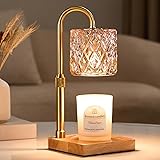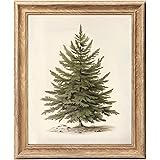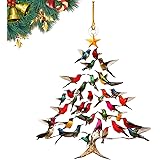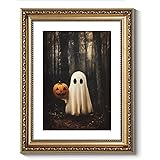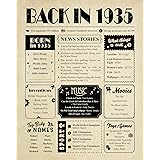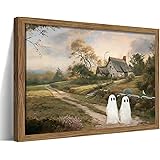Elevating Interiors: Mastering Paper Wall Decoration Ideas for Sophisticated Spaces
There is often a moment, a subtle shift in perspective, when one looks at a plain wall and envisions more. Perhaps it’s a desire for a vibrant focal point or a yearning for personalized aesthetics that resonate deeply with individual style. We’ve all been there, contemplating how to infuse personality into our living environments without embarking on extensive renovations or significant financial outlay. The captivating visual presentation above, a testament to the dynamic potential of paper, perfectly illustrates how readily accessible materials can be transformed into stunning décor. These paper wall decoration ideas are not merely fleeting trends; they represent a versatile and enduring approach to interior styling.
The Enduring Appeal of Papercraft for Contemporary Walls
The art of papercraft, when applied to wall decor, offers an unparalleled blend of creativity, cost-effectiveness, and customization. It is a medium that is consistently underestimated in its capacity for transformation. Unique textures can be introduced, intricate patterns can be formed, and dimensional effects can be achieved with relative ease. This approach allows for the curation of spaces that truly reflect personal taste and current design sensibilities, providing a refreshing alternative to mass-produced art.
The ephemeral quality of paper, far from being a drawback, can be leveraged to its advantage. Seasonal themes are effortlessly integrated, and decor can be updated without significant commitment. Moreover, the tactile experience of working with paper often fosters a deeper connection to the resulting artwork, imbuing the space with a sense of artisanal craftsmanship. The deliberate choice of paper as a primary material also speaks to a broader appreciation for sustainable practices in home decor.
Fundamental Papercraft Techniques for Expressive Wall Art
A broad spectrum of techniques can be employed when developing paper wall decoration ideas, each offering distinct visual and textural characteristics. Mastery of these methods allows for significant creative latitude and the production of truly bespoke pieces. The careful selection of technique is paramount to achieving the desired aesthetic outcome.
-
Origami and Modular Forms
Firstly, the ancient Japanese art of origami, or paper folding, is a cornerstone. Complex three-dimensional forms, often assembled into modular units, can create impressive geometric installations. These structures are frequently characterized by their clean lines and architectural precision, lending a sophisticated, minimalist appeal. The interaction of light and shadow across the folded surfaces significantly enhances their visual dynamics within a space.
-
Quilling and Filigree
Secondly, quilling involves rolling thin strips of paper into various shapes and then gluing them together to form intricate designs. This technique is recognized for its delicate, filigree-like appearance, which adds a remarkable sense of intricacy and depth. Quilled art pieces are particularly effective when a fine, detailed aesthetic is desired, often mimicking the elegance of wrought iron or delicate lace patterns.
-
Layering and Cut-Paper Art
Thirdly, cut-paper art and layering techniques allow for the creation of stunning two-dimensional or low-relief pieces. Silhouettes can be meticulously cut from contrasting paper, and multiple layers can be stacked to build depth and shadow play. This method often results in impactful visual narratives or abstract compositions that draw the eye, providing rich visual interest through subtle dimensionality.
-
Paper Flowers and Botanical Sculptures
Lastly, the crafting of paper flowers and botanical sculptures offers a vibrant, organic dimension to wall decor. From grand, oversized blooms to delicate, lifelike arrangements, these creations infuse spaces with a perpetual springtime aura. The careful shaping and coloring of petals and leaves can mimic natural forms with astonishing fidelity, adding softness and a touch of organic elegance.
Selecting the Right Materials for Optimal Paper Wall Art
The choice of paper and accompanying tools profoundly influences the success and longevity of any paper wall decoration project. Careful consideration must be given to the haptic quality, durability, and aesthetic properties of the chosen materials. These considerations are fundamental to achieving a professional and enduring finish.
Various paper types are frequently utilized, including cardstock for rigidity, specialty art papers for unique textures and colors, and even recycled papers for an eco-conscious approach. Adhesives must be selected based on paper weight and desired drying time, with archival-quality options preferred for long-term preservation. Precision tools, such as craft knives, cutting mats, and scoring instruments, are indispensable for clean lines and accurate forms. The judicious selection of materials underpins the integrity of the final artwork.
Integrating Paper Art into Diverse Interior Design Schemes
Paper art possesses an inherent adaptability, allowing it to be seamlessly integrated into a multitude of interior design aesthetics. Whether a space leans towards minimalist, bohemian, industrial, or classical, paper wall decorations can be thoughtfully curated to enhance its existing character. The versatility of the medium ensures its relevance across various stylistic paradigms.
In contemporary minimalist settings, monochromatic geometric paper installations can reinforce clean lines and understated elegance. For bohemian spaces, vibrant paper flower garlands or intricate mandalas made from quilled paper introduce rich texture and color. Industrial interiors can be softened with sculptural paper forms that juxtapose organic shapes against raw materials. Even classical designs can accommodate subtle paper accents, such as framed papercut scenes or elegant botanical motifs, proving the pervasive applicability of this art form. The key lies in thoughtful conceptualization and meticulous execution to ensure aesthetic coherence within the broader design framework.
The Sustainable and Personalized Aspect of DIY Paper Decor
Beyond its aesthetic contributions, engaging in DIY paper wall decor aligns with principles of sustainability and offers unparalleled opportunities for personalization. In an era where conscious consumption is increasingly valued, paper provides an environmentally friendly alternative to many conventional decor materials. Its renewability and recyclability are significant advantages.
The potential for personalization is often underestimated; each piece created is an extension of the artist’s vision and skill. This results in decor that carries a narrative, a history of its making, which store-bought items simply cannot replicate. The process of crafting these paper wall decoration ideas is not merely about the end product but also about the creative journey itself, fostering a unique connection between the creator and their environment. This inherent ability to customize and express individuality through paper is a compelling reason for its continued popularity in home adornment.


